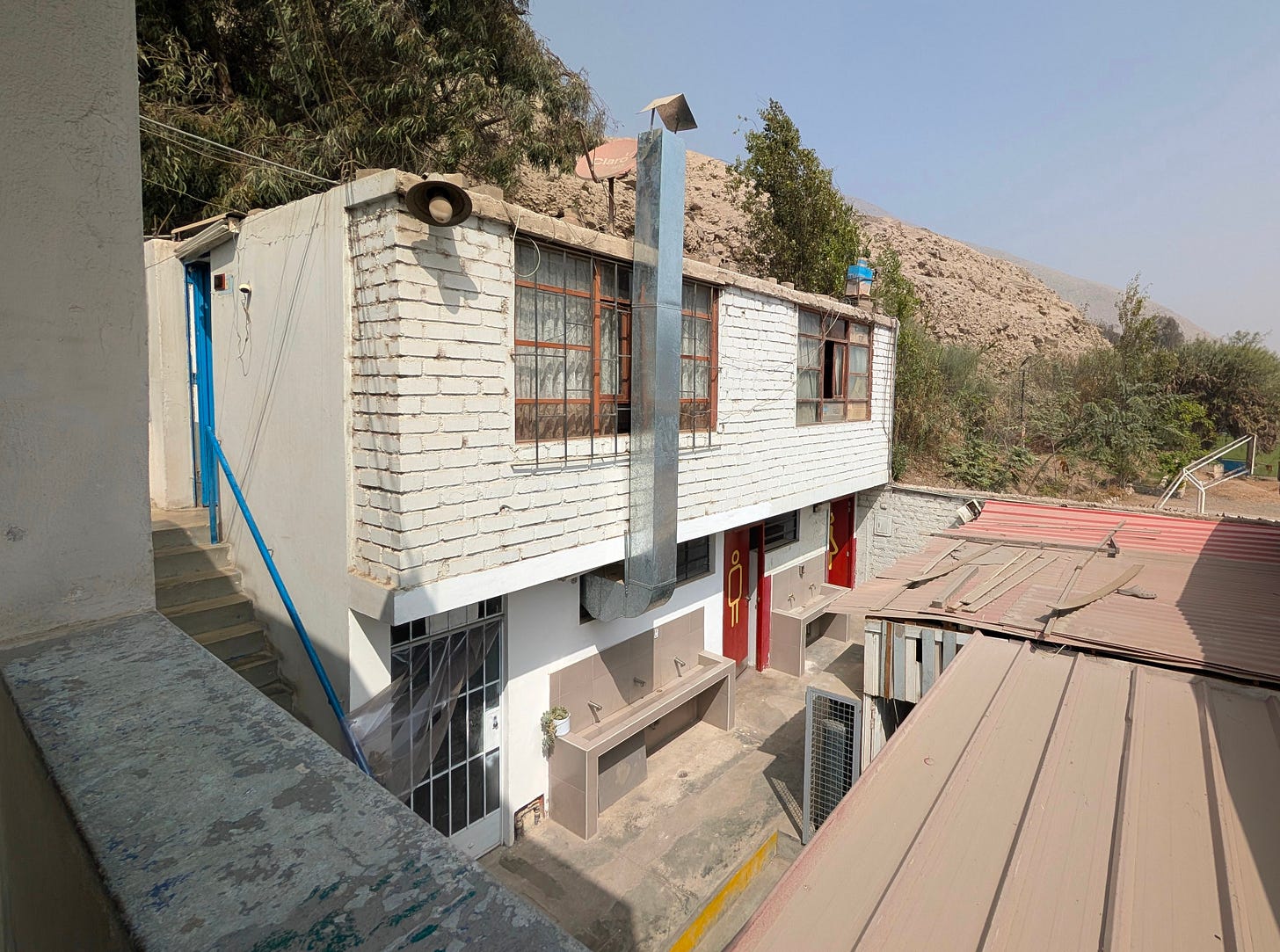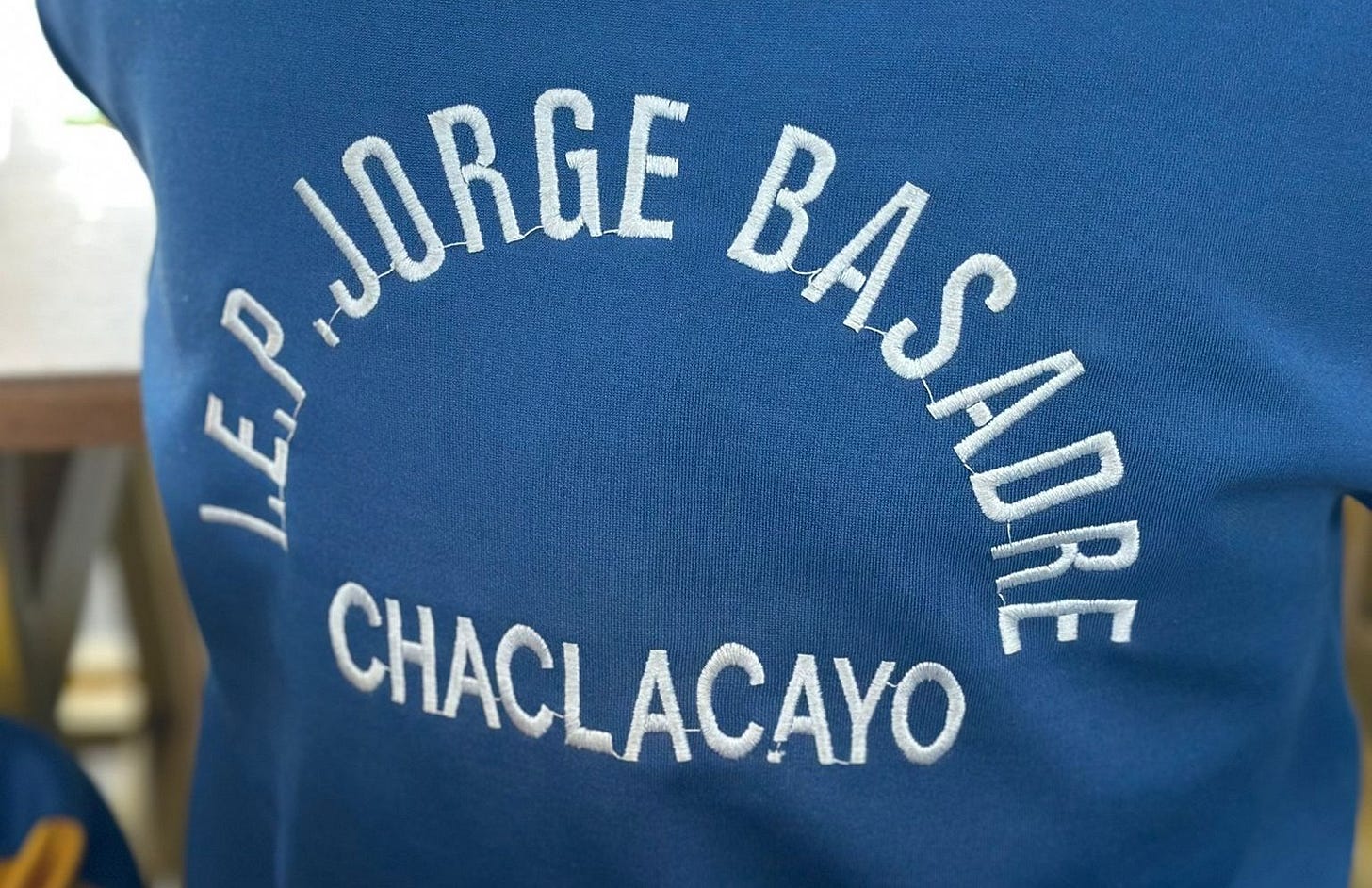Inside Jorge Basadre: A Peruvian School Built into the Mountainside
A walk-through of daily life, layout, and learning at a public school in Chaclacayo
During my Fulbright stay in Peru, I had the opportunity to visit I.E. 1217 Jorge Basadre, a public school tucked into the hillside of Chaclacayo. I wasn’t sure what to expect when I arrived, but I quickly realized how much the school’s structure, schedule, and atmosphere reflect both the landscape and the culture surrounding it. What follows is a detailed tour based on my time walking through the campus and observing school life up close on the first day.
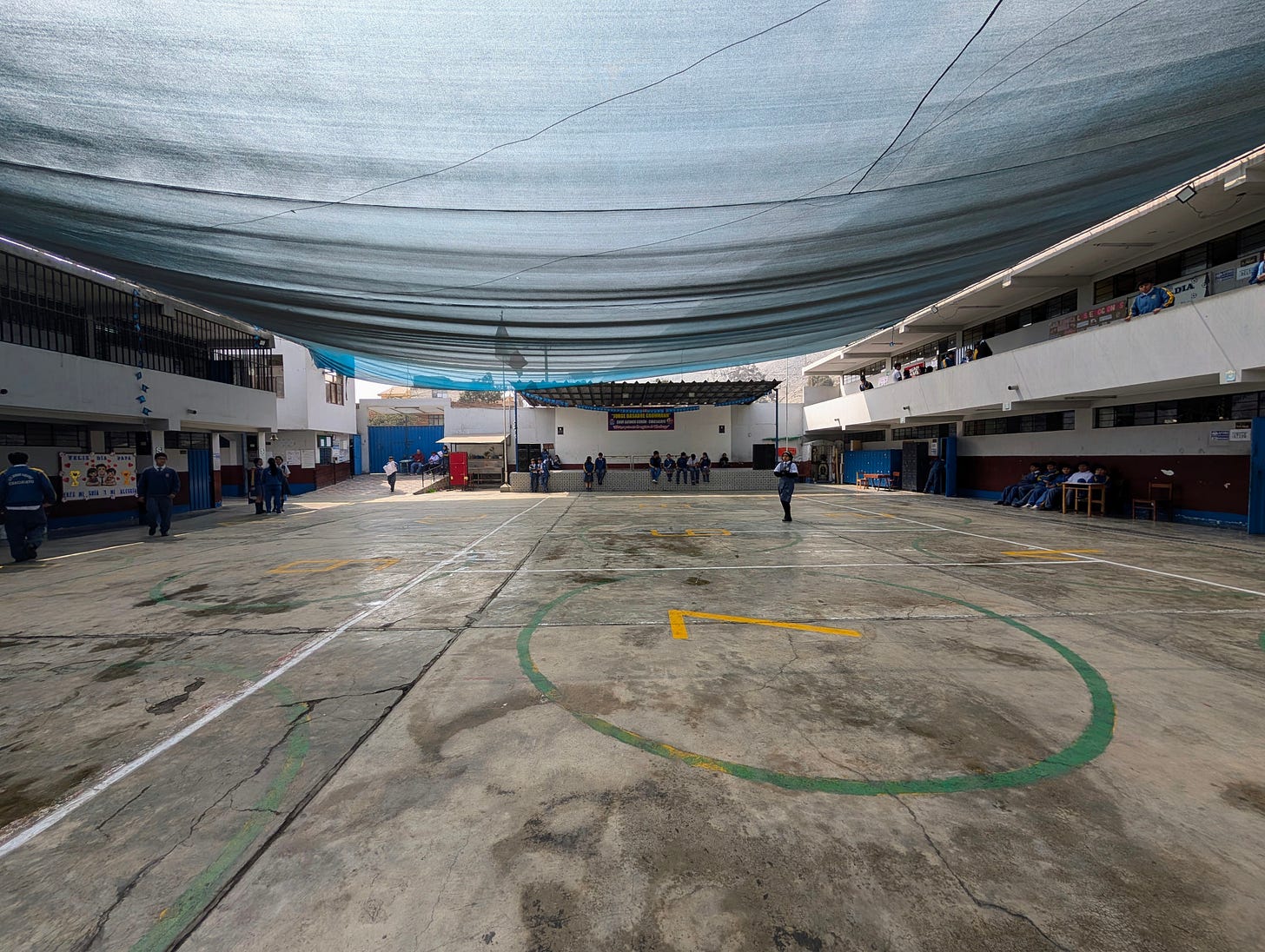
I.E. 1217 Jorge Basadre sits just off the main road in the heart of Chaclacayo. There is no designated parking lot, although space outside the entrance allows for buses and families to drop off and pick up students. Local vendors line the sidewalk, selling breakfast in the mornings and snacks after school. Across from the front entrance is a small school store that sells uniforms and assorted clothing.
The school is completely enclosed by high concrete walls. There is no front yard or green space leading up to the building. From the outside, it is impossible to see inside. A steel entrance gate opens to reveal a large open-air courtyard, a layout common in Peruvian schools. One end of the courtyard holds a raised stage, while the other includes a snack kiosk and a supply store for teachers.
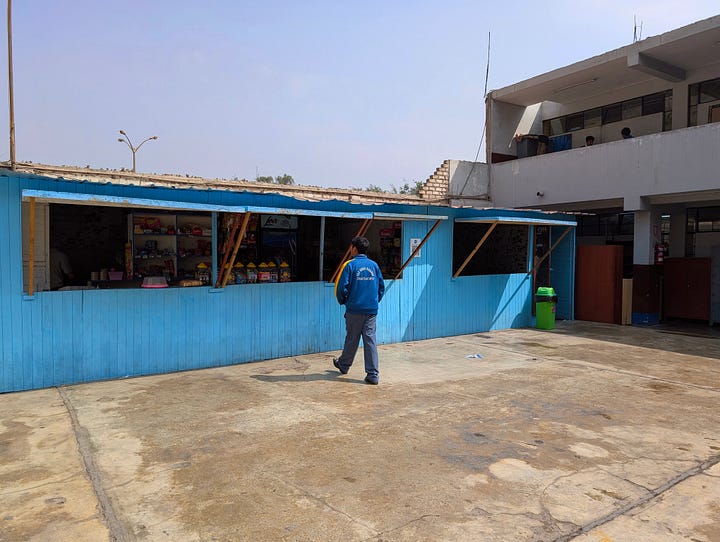
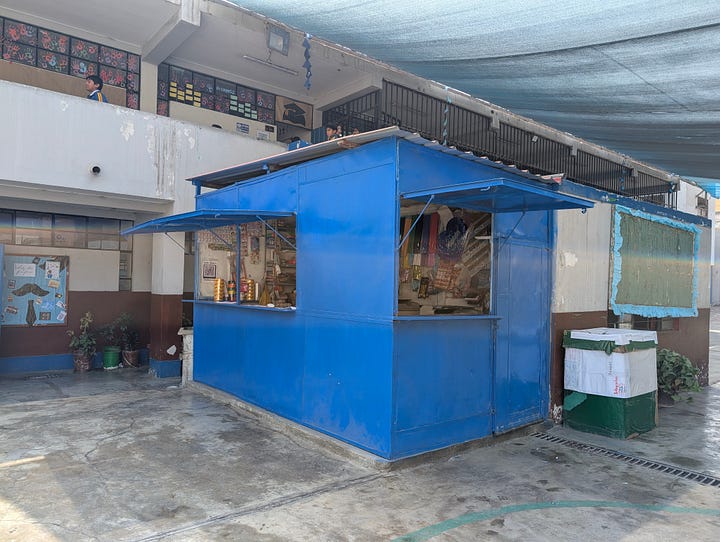
A weathered canvas canopy provides shade, and classrooms line the courtyard with open-air ledges that let in natural sunlight and breeze.
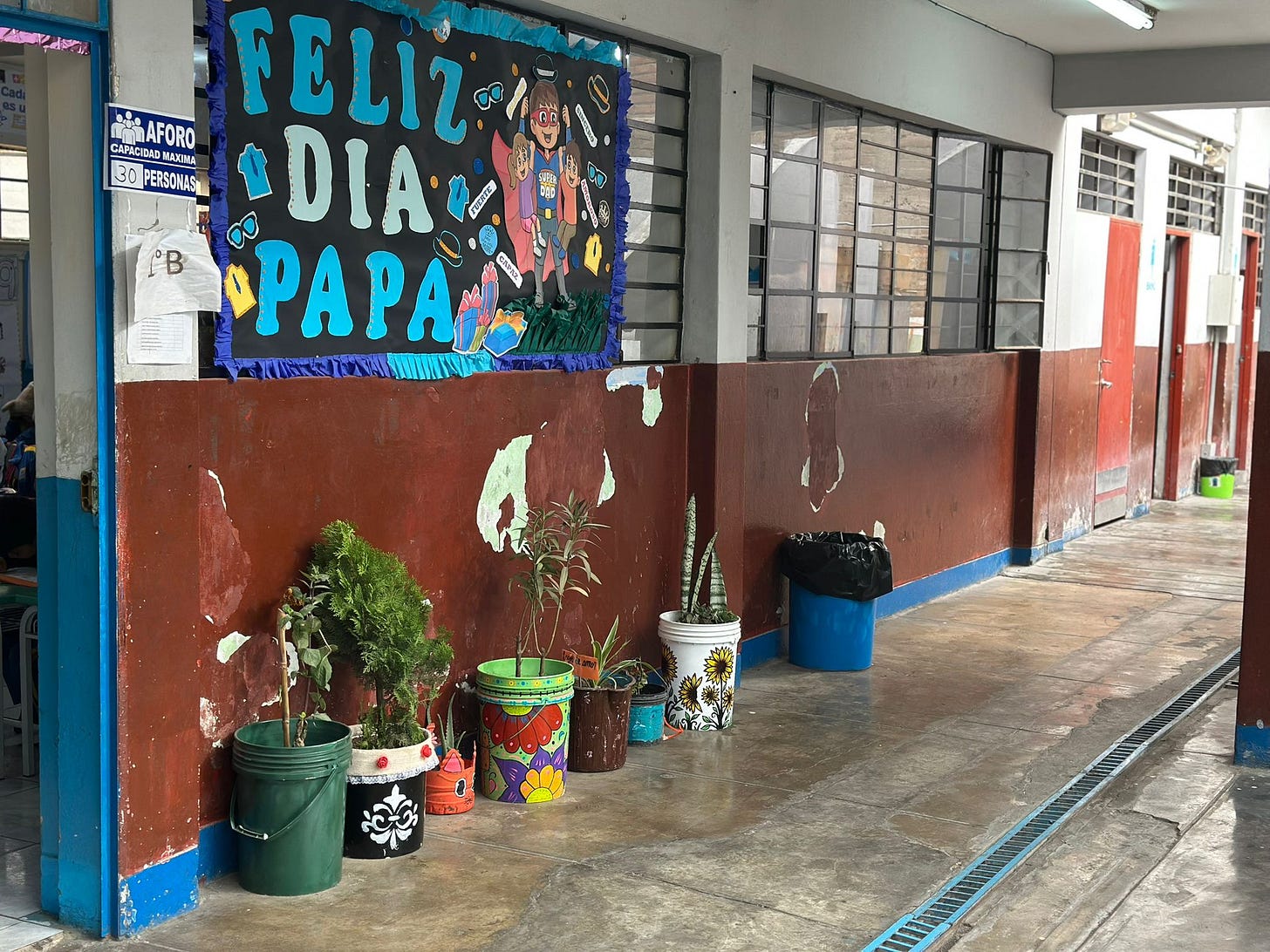
The campus is divided into two main sections: one for secondary students and another for primary. Each follows a similar layout. Classrooms are small and filled to capacity, typically with around 30 students seated at handmade wooden desks. Each room has a dry erase board and either a projector or a television. There are no Chromebooks, although two shared computer labs are located upstairs. These labs are locked behind steel cages, likely due to past break-ins when new equipment was installed.
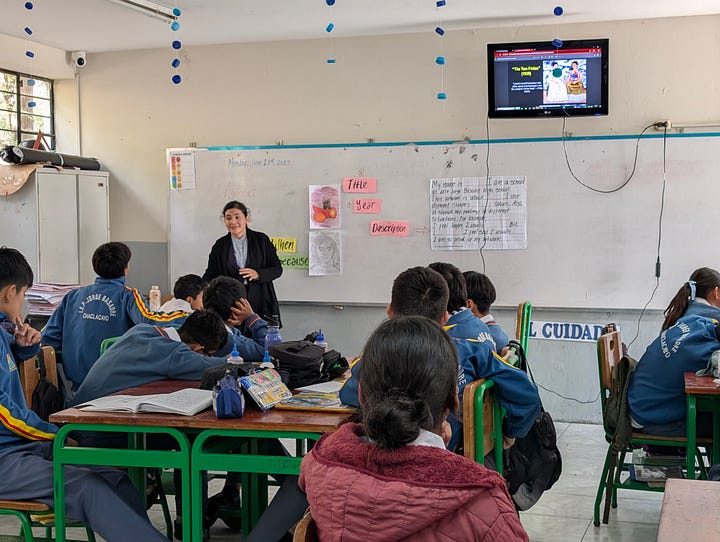

The school is built into the side of a mountain, creating a layered, uneven layout. Steps vary in height, and the concrete floors are polished throughout. The design allows for fresh air circulation, and despite the lack of window screens, I did not notice any bugs. Sound echoes heavily through the concrete structure. The noise from physical education classes was constant, although neither students nor teachers seemed bothered by it.
Outside, students have access to a soccer field, basketball court, and wooden foosball table. Bathrooms are tucked in a back corner, with a tiled handwashing station just outside. Toilet paper is not provided in the stalls, a detail that has become common knowledge for me during this visit. Mudslides are frequent in this region and sometimes wash debris into the lower levels of the school. In the video I posted above, note how the mountain is dirt and backed tight to the school.
Electricity is rarely used during the school day due to the abundance of natural light. Classrooms are minimalistic. Most rooms lack word walls, bilingual posters, or clocks. A few had pieces of student artwork. I did not see a library available for student use.
The schedule at Jorge Basadre follows a flexible structure, more similar to a college than a traditional K–12 system. Students do not have the same classes each day. Instead, subjects are scheduled by the number of hours per week. For example, physical education might meet for two hours one day and one hour another. Teachers rotate between rooms while students stay in the same classroom throughout the day. There is no passing time, and classes usually start late.
Around 11:00 a.m., students take a snack break. Many use this time to eat and play games like volleyball on the concrete. The level of athletic skill was surprising. I watched a third grader deliver one of the strongest overhead serves I’ve ever seen.
There is no cafeteria. Families drop off homecooked lunches, which are sorted by student name and placed in a corner of the courtyard. This routine reflects the school's strong community ties. That pride was also evident when I saw students practicing traditional Peruvian dances during a class period.
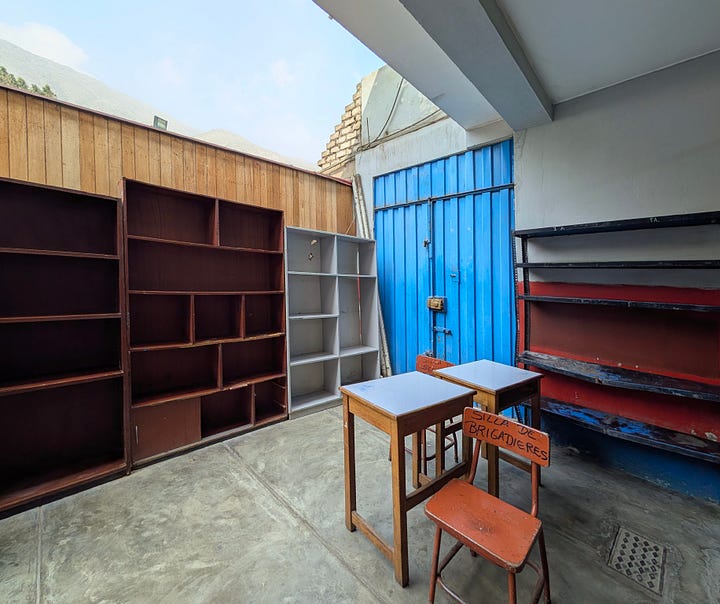
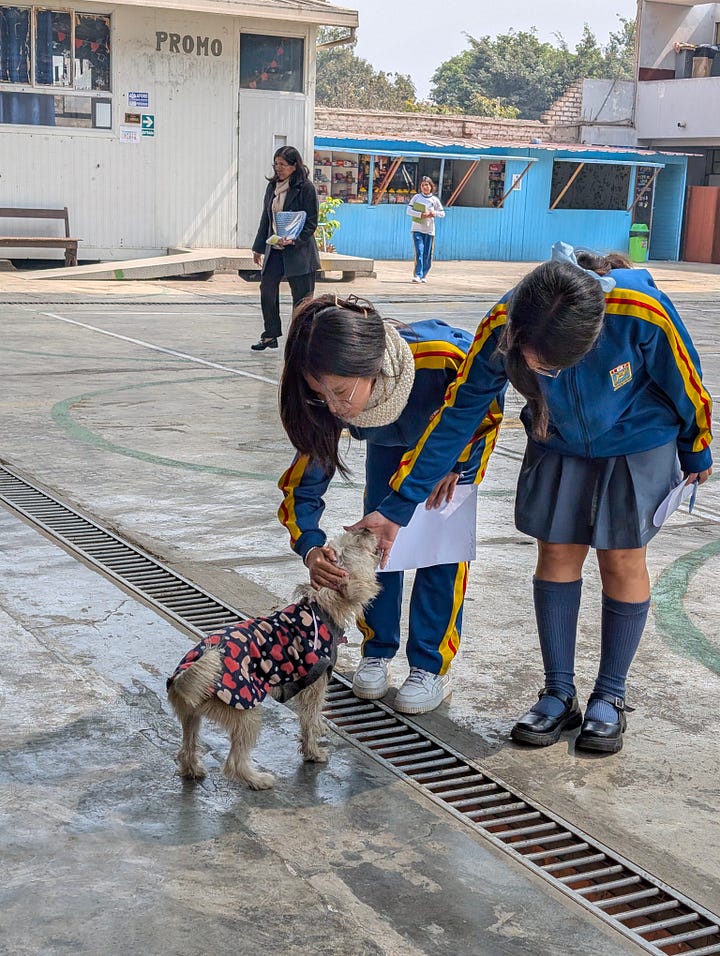
Although I never located a centralized main office, I believe the principal’s office is above the bathrooms in the back corner. A man at the entrance checks arrivals and occasionally rings a large cast iron bell. This bell seems to signal transitions for the primary grades, since the secondary students do not switch classrooms.
The school year in Peru runs from March to December, with a two-week winter break in July. During my visit, the weather hovered around 61 degrees, and the sun set by 7 p.m.
Jorge Basadre is a school shaped by its geography, its people, and its resourcefulness. Inside the concrete perimeter is a place filled with activity, tradition, and community spirit.


